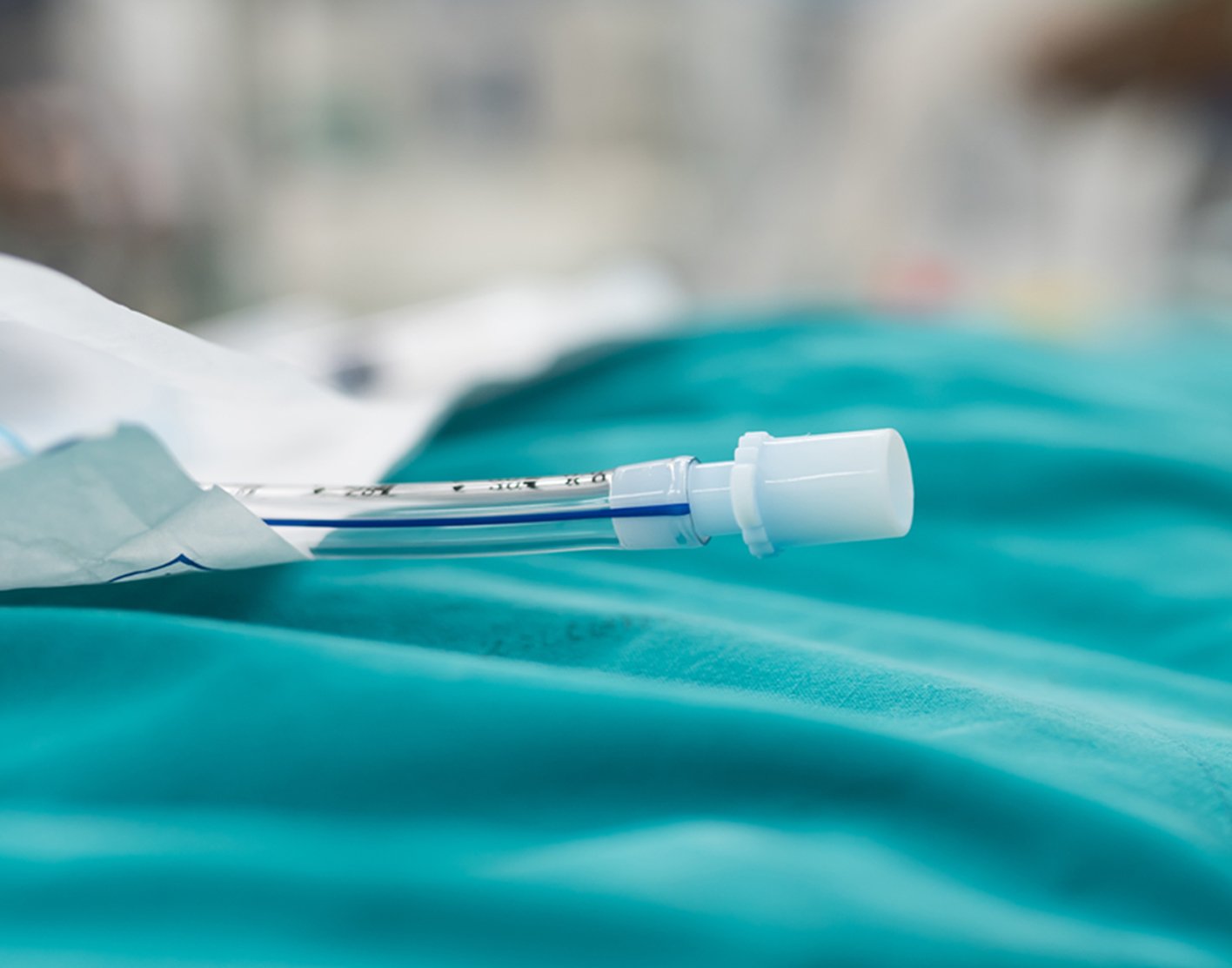
Endotracheal intubation
Definition
Endotracheal intubation is a medical procedure in which a tube is placed into the windpipe (trachea) through the mouth or nose. In most emergency situations, it is placed through the mouth.
Alternative Names
Intubation - endotracheal
Description
Whether you are awake (conscious) or not awake (unconscious), you will be given medicine to make it easier and more comfortable to insert the tube. You may also receive medicine to relax.
The health care provider will insert a device called a laryngoscope to be able to view the vocal cords and the upper part of the windpipe.
If the procedure is being done to help with breathing, a tube is then inserted into the windpipe and past the vocal cords to just above the spot where the trachea branches into the lungs. The tube can then be connected to a mechanical ventilator to assist breathing.
Why the Procedure Is Performed
Endotracheal intubation is done to:
- Keep the airway open in order to give oxygen, medicine, or anesthesia.
- Support breathing in certain illnesses, such as pneumonia, emphysema, heart failure, collapsed lung or severe trauma.
- Remove
blockages from the airway. - Allow the provider to get a better view of the upper airway.
- Protect the lungs in people who are unable to protect their airway and are at risk for breathing in fluid (aspiration). This includes people with certain types of strokes, overdoses, or massive bleeding from the esophagus or stomach.
Risks
Risks include:
- Bleeding
- Infection
- Trauma to the voice box (larynx), thyroid gland, vocal cords and windpipe (trachea), or esophagus
- Puncture or tearing (perforation) of body parts in the chest cavity, leading to lung collapse
Before the Procedure
The procedure is most often done in emergency situations, so there are no steps you can take to prepare.
After the Procedure
You will be in the hospital to monitor your breathing and your blood oxygen levels. You may be given oxygen or placed on a breathing machine. If you are awake, your provider may give you medicine to reduce your anxiety or discomfort.
Outlook (Prognosis)
The outlook will depend on the reason the procedure needed to be done.
References
Casey DF. Tracheal intubation. In: Fowler GC, ed. Pfenninger and Fowler's Procedures for Primary Care. 4th ed. Philadelphia, PA: Elsevier; 2020:chap 222.
Driver BE, Reardon RF. Tracheal intubation. In: Roberts JR, Custalow CB, Thomsen TW, eds. Roberts and Hedges' Clinical Procedures in Emergency Medicine and Acute Care. 7th ed. Philadelphia, PA: Elsevier; 2019:chap 4.
Hartman ME, Cheifetz IM. Pediatric emergencies and resuscitation. In: Kliegman RM, St. Geme JW, Blum NJ, Shah SS, Tasker RC, Wilson KM, eds. Nelson Textbook of Pediatrics. 21st ed. Philadelphia, PA: Elsevier; 2020:chap 81.
Review Date: 06/10/2022
The information provided herein should not be used during any medical emergency or for the diagnosis or treatment of any medical condition. A licensed physician should be consulted for diagnosis and treatment of any and all medical conditions. Call 911 for all medical emergencies. Links to other sites are provided for information only -- they do not constitute endorsements of those other sites. Copyright ©2019 A.D.A.M., Inc., as modified by University of California San Francisco. Any duplication or distribution of the information contained herein is strictly prohibited.
Information developed by A.D.A.M., Inc. regarding tests and test results may not directly correspond with information provided by UCSF Health. Please discuss with your doctor any questions or concerns you may have.



























